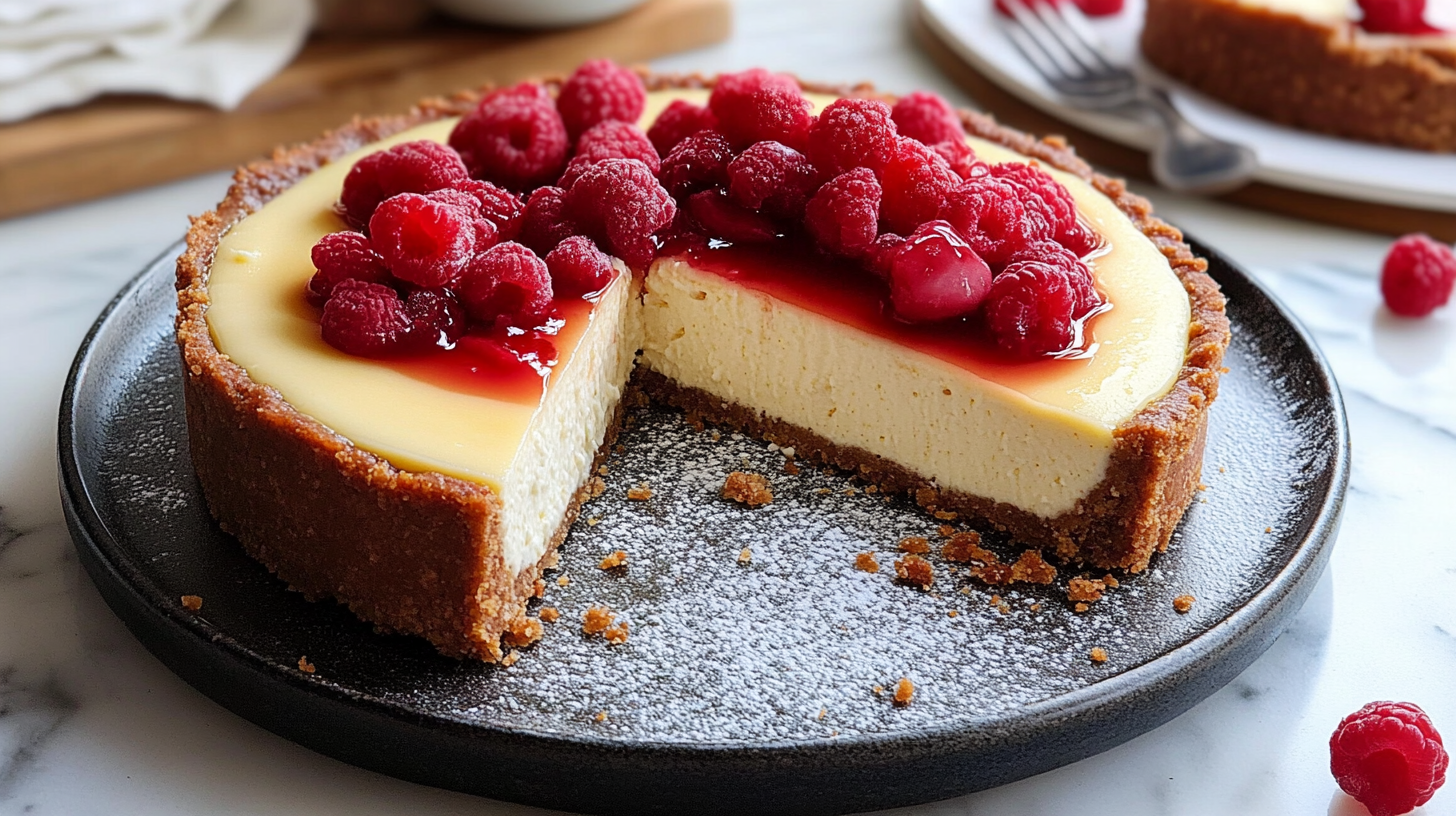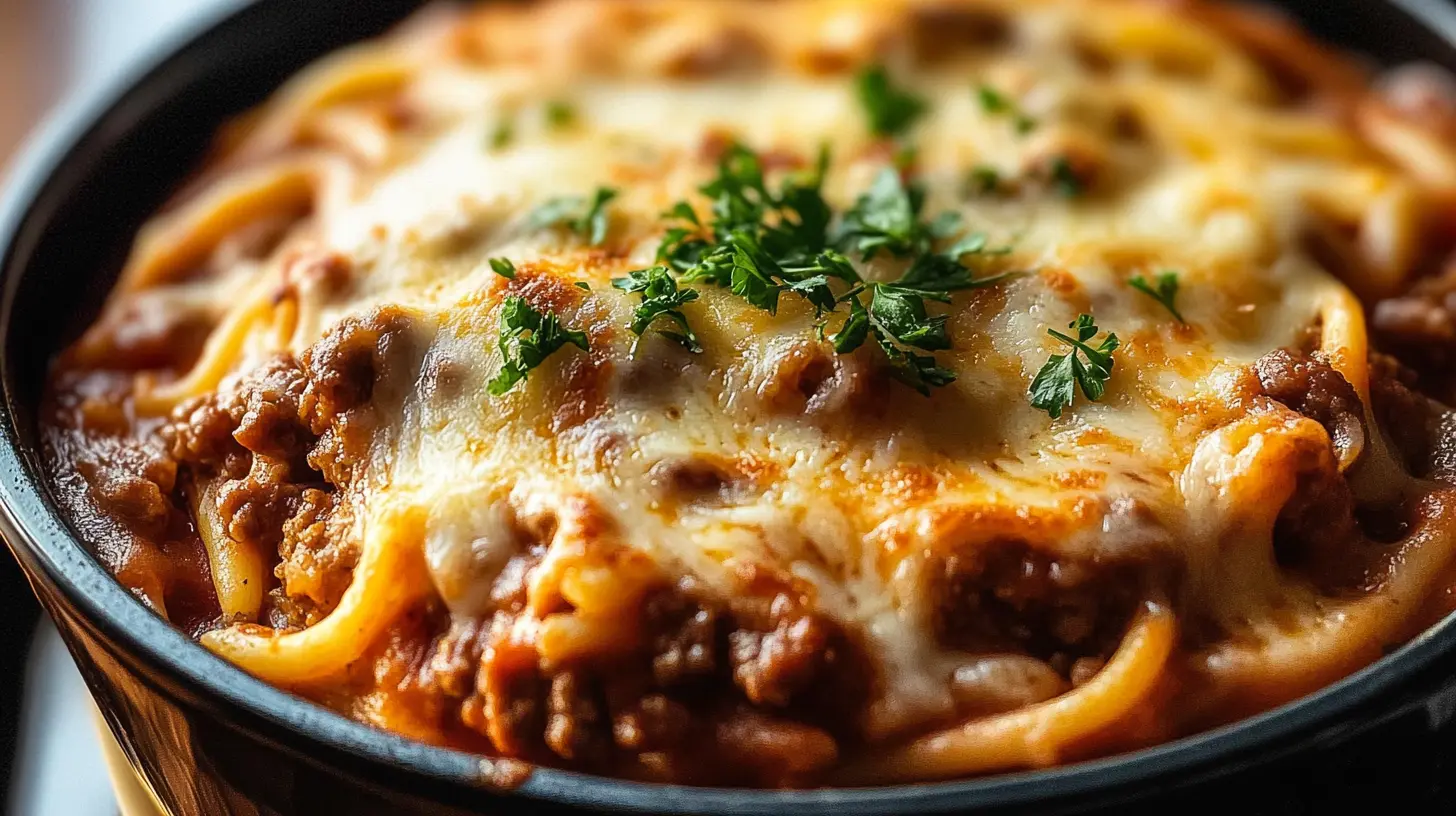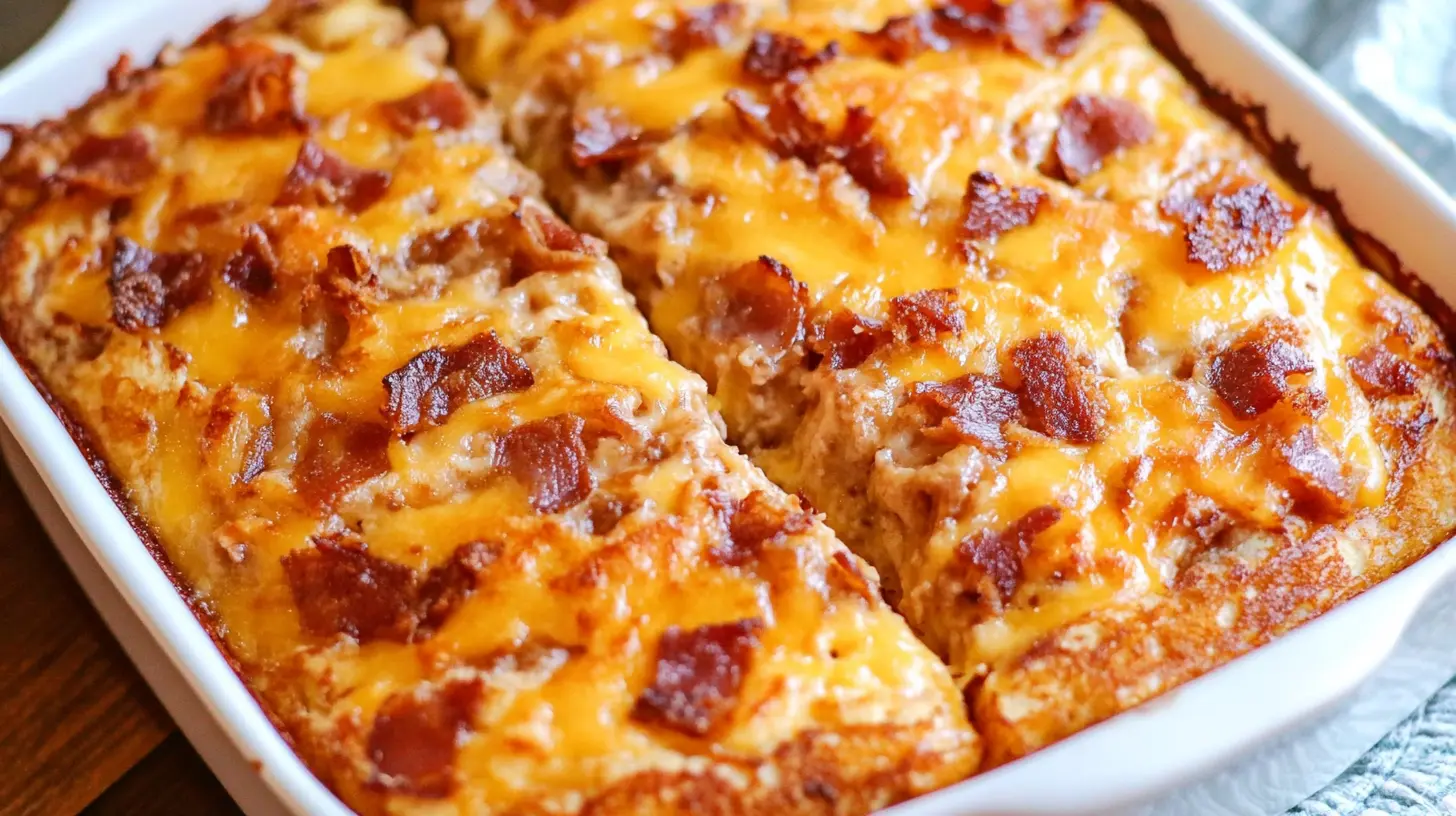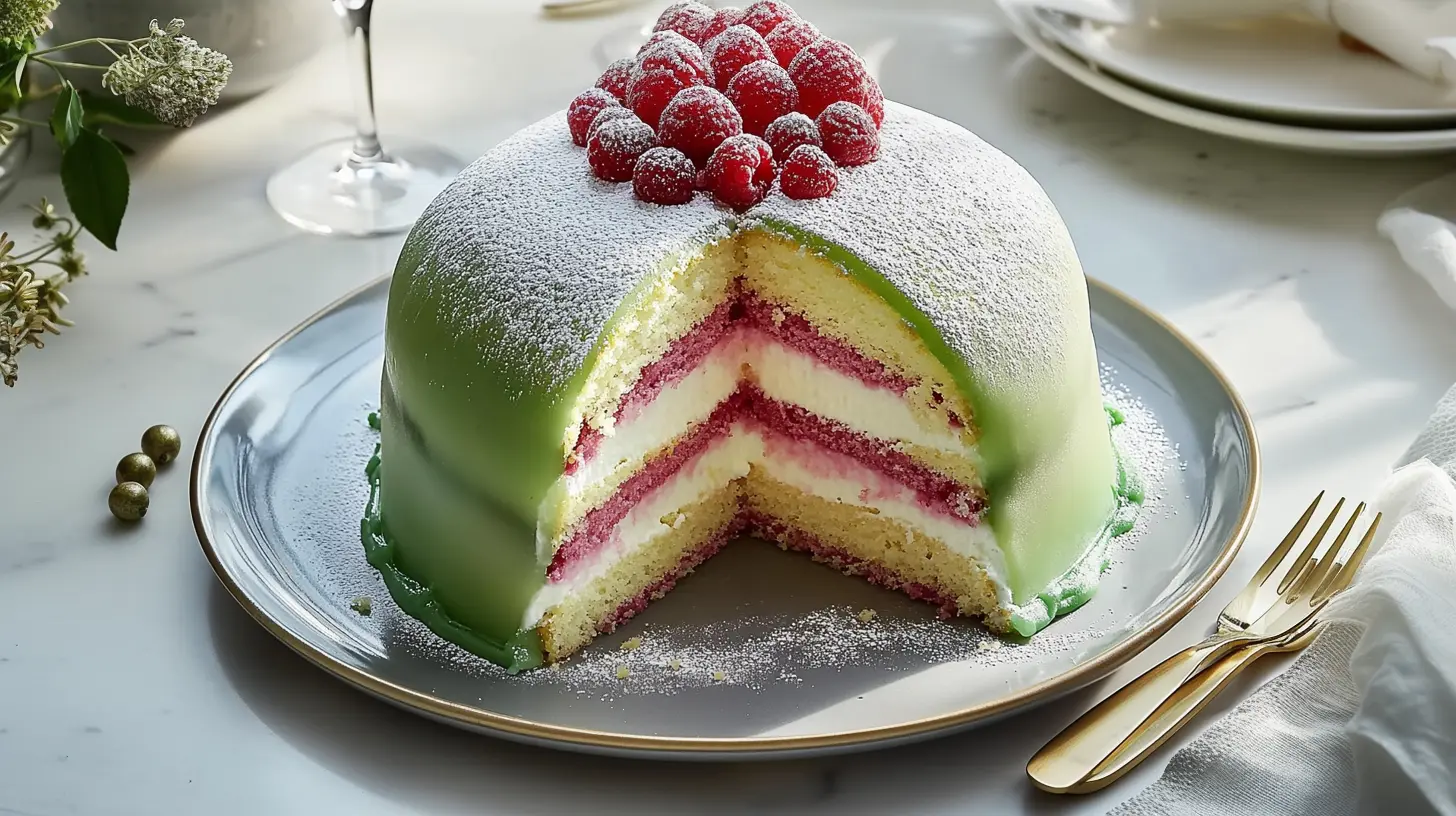Why You’ll Love This Recipe
If you’re looking for a lighter, healthier alternative to traditional cheesecakes, this Cottage Cheese Cheesecake recipe is perfect for you. Unlike traditional cream cheese cheesecakes, this version uses protein-packed cottage cheese as the base, making it not only creamy but also a more nutritious option. This cheesecake recipe is ideal for a wide range of audiences, including busy parents, diet-conscious individuals, students, and baking enthusiasts. With its adaptability to various dietary preferences, including gluten-free and low-calorie options, this cheesecake stands out as a versatile and guilt-free dessert.
This cheesecake is easy to prepare, and cottage cheese brings a subtle tangy flavor that perfectly complements the sweetness of the dessert. It’s a must-try for those seeking a healthier alternative without compromising on taste. Whether you’re a fan of classic cheesecakes or looking to try something new, this recipe offers the perfect balance of flavor and health benefits.
Want to try other exciting cheesecakes? Check out blackberry cheesecake recipe for another fruity, creamy delight.
Benefits and Advantages of Cottage Cheese Cheesecake
Cottage cheese, often overshadowed by other cheeses, provides numerous benefits when incorporated into desserts like cheesecakes. Here’s why this cottage cheese cheesecake recipe is a winner:
1. High in Protein and Nutrients:
Cottage cheese is a fantastic source of protein, making this cheesecake more filling and nutritious than traditional versions. With added calcium and vitamins, it’s an excellent option for those who want a dessert that doubles as a healthy snack.
2. Low in Fat:
Unlike traditional cheesecakes, which use full-fat cream cheese, this recipe allows you to enjoy a rich dessert with significantly less fat. This makes it ideal for those watching their calorie intake or following a low-fat diet.
3. Versatile for Different Diets:
Whether you’re gluten-free, vegetarian, or even trying to reduce your sugar intake, this recipe can be easily adapted to fit your needs. You can opt for gluten-free crusts or natural sweeteners like honey or maple syrup.
4. Easy to Prepare:
This cheesecake is surprisingly simple to make. With just a few steps and minimal equipment, even novice bakers can whip up this healthy dessert in no time.
Looking for more healthy dessert ideas? You can explore other recipes like the apple crumble cheesecake on our blog.
Ingredients Overview
Essential Ingredients
Here’s what you’ll need to make this healthy cottage cheese cheesecake:
- For the Crust:
- 1 ½ cups of graham cracker crumbs (or gluten-free alternative)
- ⅓ cup melted butter (or coconut oil for a vegan option)
- ¼ cup sugar or honey (substitute with stevia for low-sugar)
- For the Filling:
- 2 cups cottage cheese (use low-fat or fat-free if preferred)
- 1 cup Greek yogurt or sour cream (use dairy-free yogurt for a vegan alternative)
- ½ cup sugar or a natural sweetener like agave syrup
- 2 large eggs (or flax eggs as a vegan substitute)
- 1 tsp vanilla extract
- Zest of 1 lemon (optional for a citrus flavor)
Dietary Substitutions to Customize Your Cottage Cheese Cheesecake
- Gluten-Free Option:
Use gluten-free graham crackers or almond flour for the crust. - Low-Sugar Option:
Swap sugar with natural sweeteners like stevia, monk fruit, or honey for a low-calorie version. - Vegan Option:
Replace eggs with flax eggs (1 tbsp flaxseed meal mixed with 3 tbsp water per egg), cottage cheese with a vegan alternative, and yogurt with coconut or almond milk-based yogurt.
Pro Tip: If you’re experimenting with other healthy desserts, try protein banana bread to satisfy your sweet tooth in a healthier way.
Substitutions for Different Dietary Needs
Here’s a detailed guide to help you prepare this easy and delicious cottage cheese cheesecake:
First Step: Prepare the Crust
- Preheat your oven to 325°F (160°C).
- In a medium bowl, combine the graham cracker crumbs and melted butter (or coconut oil). Stir until the mixture resembles wet sand.
- Press the mixture into the bottom of a springform pan, creating an even layer. Use the back of a spoon to press down firmly.
- Bake the crust for 8-10 minutes, or until golden brown. Set aside to cool while preparing the filling.
Second Step: Blend the Cottage Cheese
- In a blender or food processor, blend the cottage cheese until smooth and creamy.
- Add Greek yogurt (or sour cream), sugar, and vanilla extract to the blender. Blend until everything is fully combined.
- Add the eggs one at a time, blending after each addition. If making a vegan version, add your flax eggs instead.
Third Step: Assemble and Bake
- Pour the cheesecake mixture over the prepared crust, spreading it evenly.
- Bake in the preheated oven for 45-55 minutes, or until the center is just set but still slightly jiggly. Avoid overbaking, as this can cause cracks.
- Turn off the oven and allow the cheesecake to cool in the oven for an additional 30 minutes with the door slightly open.
- Remove the cheesecake from the oven and cool it completely at room temperature before refrigerating for at least 4 hours or overnight.
Fourth Step: Serve
- Once chilled, slice and serve with your favorite toppings like fresh berries, a drizzle of honey, or a sprinkle of cinnamon.
For other baking tips, check out easy keto diet shrimp recipes for low-carb meal ideas.
Mastering Cottage Cheese Cheesecake: Advanced Tips and Variations
1. Add Fruit for Flavor:
For a burst of fruity flavor, try adding fresh or frozen berries like blueberries or raspberries to the filling before baking.
2. Swirl in Jam:
Create a marbled effect by swirling your favorite fruit jam into the cheesecake batter before baking.
3. Avoid Cracking:
To prevent cracks, bake the cheesecake in a water bath. Place the springform pan in a larger pan filled with an inch of hot water while baking.
How to Store Cottage Cheese Cheesecake: Best Practices
- Refrigeration:
Store your cottage cheese cheesecake in the fridge for up to 5 days, ensuring it’s covered to maintain freshness. - Freezing:
Cheesecake freezes well! Wrap it tightly in plastic wrap and foil, and freeze for up to 3 months. Thaw overnight in the refrigerator before serving. - Reheating:
If you like warm cheesecake, let it sit at room temperature for about 10-15 minutes before serving.
Nutritional Value of Cottage Cheese Cheesecake
Here’s an approximate nutritional breakdown for one slice of cottage cheese cheesecake:
- Calories: 220
- Protein: 12g
- Fat: 10g
- Carbohydrates: 25g
- Fiber: 1g
- Sugar: 18g
These values may vary based on ingredient substitutions, such as using low-fat cottage cheese or alternative sweeteners.
FAQs: Frequently Asked Questions About Cottage Cheese Cheesecake
Can Cottage Cheese Replace Cream Cheese?
Yes, cottage cheese can be used as a substitute for cream cheese in many recipes, including cheesecakes, dips, and spreads. However, there are some textural differences. Cottage cheese is much lumpier and less creamy than cream cheese, so it’s best to blend it first to achieve a smooth consistency. Blending will help it mimic the creamy texture of cream cheese more closely, making it ideal for both baked and no-bake recipes. This substitution offers a lower-fat, higher-protein alternative to cream cheese, making it a healthier choice in many dishes.
To learn more about the nutritional aspects of cottage cheese, you can visit its Wikipedia page.
Does Cottage Cheese Melt Like Cheese?
Cottage cheese doesn’t melt the way other cheeses like cheddar or mozzarella do. Instead of turning gooey or stretchy, it softens and releases moisture when heated. In dishes like casseroles or baked recipes, it will blend into the other ingredients, giving a creamy texture but not the stringy, melted cheese effect. Therefore, while it’s great for adding moisture and creaminess to dishes, it won’t create the same melted cheese experience as traditional cheeses.
Is Cottage Cheese Healthier Than Cream Cheese?
Yes, cottage cheese is generally considered healthier than cream cheese. Cottage cheese is low in fat, particularly if you opt for low-fat or fat-free versions, and it’s rich in protein. On the other hand, cream cheese contains more fat and fewer proteins, making it a more indulgent option. For those seeking a high-protein, lower-calorie alternative, cottage cheese is the better choice. It also provides essential nutrients like calcium and B vitamins, which contribute to bone health and energy production.
Can I Use Cottage Cheese Instead of Sour Cream in Cheesecake?
Yes, you can substitute cottage cheese for sour cream in cheesecake recipes. However, like when replacing cream cheese, you’ll need to blend the cottage cheese to achieve a smooth texture. This substitution works well in both baked and no-bake cheesecakes, adding a light and slightly tangy flavor while reducing the fat content. Blended cottage cheese also adds extra protein, making it a more nutritious choice.
What Is a Substitute for Cream Cheese in Cheesecake?
Aside from cottage cheese, there are several substitutes for cream cheese in cheesecakes:
- Ricotta Cheese: It’s slightly grainier than cream cheese but can be blended to a smoother consistency. Ricotta offers a light, airy texture and pairs well with both savory and sweet dishes.
- Greek Yogurt: For a tangy and creamy alternative, Greek yogurt works well, especially in no-bake cheesecakes.
- Mascarpone Cheese: This Italian cheese is richer and creamier than cream cheese, making it a decadent substitute.
- Silken Tofu: For a vegan alternative, silken tofu is a great substitute. It provides a smooth, creamy base similar to cream cheese.
Each substitute brings a different texture and flavor, so you can choose based on the recipe and your dietary needs.
Does Cottage Cheese Turn Into Sour Cream?
No, cottage cheese does not turn into sour cream. While both are dairy products, they have distinct production processes. Sour cream is made by fermenting cream with lactic acid bacteria, giving it a tart flavor and thick consistency. Cottage cheese, on the other hand, is made from curds, which gives it a different texture and flavor profile. While blended cottage cheese can mimic the creaminess of sour cream, it won’t develop the same tangy taste or thickness.
Which Is Healthier, Ricotta or Cottage Cheese?
Both ricotta and cottage cheese are considered healthy, but their nutritional profiles differ slightly. Cottage cheese generally has fewer calories and less fat than ricotta, especially when you choose a low-fat or fat-free version. It also contains more protein, making it a better choice for those looking to increase their protein intake. Ricotta, however, has a slightly higher fat content, which gives it a creamier texture. It’s also a good source of calcium and vitamin A.
If you’re focused on weight management or protein intake, cottage cheese is the healthier option. However, ricotta’s creamier texture may be preferable in some recipes.
What Happens if You Heat Cottage Cheese?
When you heat cottage cheese, it doesn’t melt like other cheeses but rather softens and releases moisture. This can create a creamy, slightly watery texture, making it great for blending into dishes like lasagna, casseroles, or baked goods. However, heating it on its own won’t give you the gooey, melted texture you’d get from other cheeses like mozzarella or cheddar.
What Can You Do With Expired Cottage Cheese?
If your cottage cheese is just slightly past its expiration date but still smells and looks fine, you can use it in cooked dishes such as casseroles, pancakes, or baked goods. Cooking can reduce the risk of any potential spoilage. However, if the cottage cheese smells sour, has changed color, or has mold, it’s best to discard it. Eating spoiled cottage cheese can result in foodborne illness, so always err on the side of caution.
Can Dogs Have Cottage Cheese?
Yes, dogs can safely eat cottage cheese in moderation. It’s a good source of protein and calcium, and the lower fat content makes it a better choice than higher-fat cheeses. Cottage cheese can also be gentle on a dog’s digestive system if they tolerate dairy. However, as with any treat, it’s important to offer it in small amounts to avoid upset stomachs, especially if your dog is lactose intolerant.
How to Tell When Cottage Cheese Is Bad?
There are several signs that cottage cheese has gone bad:
- Sour Smell: Fresh cottage cheese should have a mild, milky smell. If it smells sour or off, it’s likely spoiled.
- Discoloration: Cottage cheese should be white. If it develops yellow or green spots, this could be mold, and the product should be discarded.
- Texture: Spoiled cottage cheese may become slimy or overly watery.
- Taste: If it tastes sour or bitter, it’s no longer safe to eat.
Always check the expiration date and store cottage cheese properly to extend its freshness.
Conclusion
Cottage cheese cheesecake offers a lighter, healthier twist on a classic dessert. With its high protein content and adaptable ingredients, this cheesecake is perfect for health-conscious eaters who don’t want to sacrifice flavor. Whether you’re new to baking or a seasoned pro, this recipe is simple to follow and guaranteed to impress. Ready to explore more healthy dessert ideas? Dive into our other delightful recipes like the vegan mushroom recipes to add variety to your cooking adventures.




